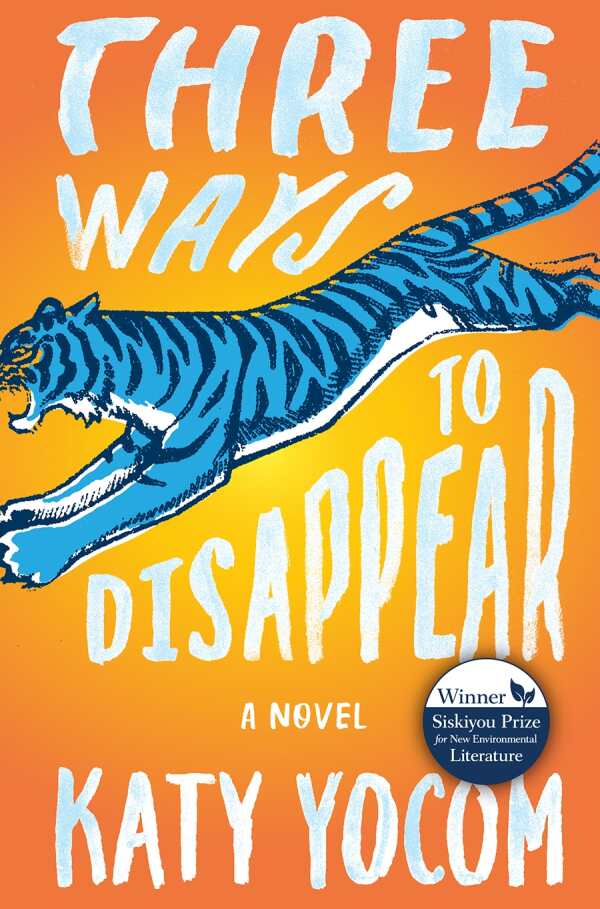Three Ways to Disappear
In Katy Yocom’s immersive and multilayered novel Three Ways to Disappear, Sarah and Quinn confront painful childhood truths and address their neglected sisterhood.
Beginning with a glimpse of Sarah and Quinn’s childhood in India, the story begins when their brother, Marcus, dies under bizarre circumstances. The fallout is severe: the girls’ parents separate, and Sarah and Quinn move, with their mother, back to the United States. Fast forward two decades, and the women are still reeling from the secrets of their past.
Disillusioned with her nomadic journalism career, Sarah drops everything to move back to India and join Tiger Survival, an organization dedicated to local tiger conservation. When she becomes enmeshed in a forbidden romance with a coworker, her ideas of love collide with Indian tradition, and Sarah enters the most delicate negotiation of her life.
In Kentucky, Quinn is now an artist who has lost her touch, and her marriage is dying. Meanwhile, Sarah and Quinn’s mother develops a financially disastrous shopping addiction. When Sarah asks Quinn to come to India, Quinn knows that it’s time to deal with her guilt and seek answers about Marcus’s death.
Authentic relationships drive the story. Indian regions and the conservation park themselves function as characters, along with tigers Machli and Akbar. Sarah is enthralling—a savvy traveler whose manner of dealing with antagonists is excellent.
Though much action centers on Sarah’s conservation efforts and the plights of the tigers, consideration and sympathy are also shown to conservation “opponents.” The narrative highlights other social issues, too, as when the sisters discuss their protected status as white people in a non-western region. Subconscious ideas of power surface as Sarah makes a solo decision for local Indian women about their co-op membership.
Three Ways to Disappear is informative, refreshingly complex, and ends in realistic fashion. Sometimes answers only beget more questions, and consequences make life, like the future of the tiger, uncertain.
Reviewed by
Tanisha Rule
Disclosure: This article is not an endorsement, but a review. The publisher of this book provided free copies of the book to have their book reviewed by a professional reviewer. No fee was paid by the publisher for this review. Foreword Reviews only recommends books that we love. Foreword Magazine, Inc. is disclosing this in accordance with the Federal Trade Commission’s 16 CFR, Part 255.

